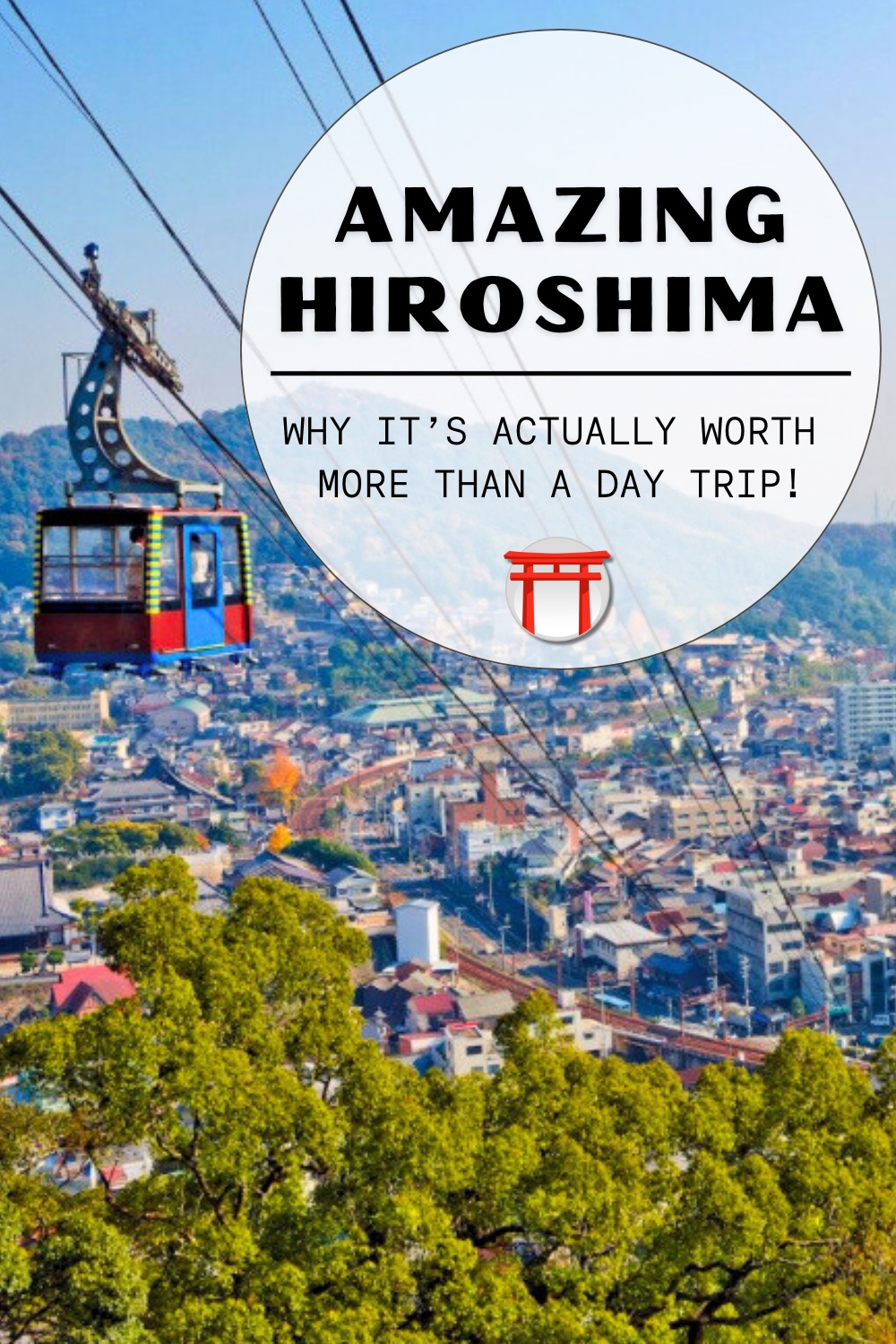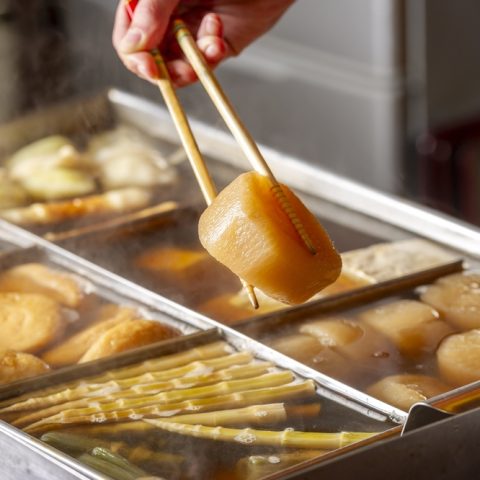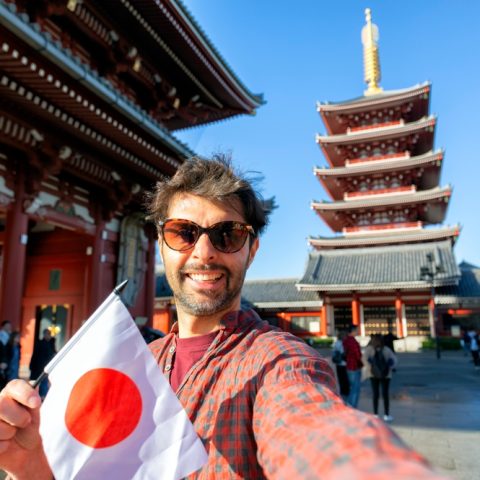
Hiroshima is famous worldwide as the site of the atomic bombing in 1945. People from all cultures often go here on day trips to go to monuments and witness the remnants of war. Additionally, those who are more familiar with Japanese culture would also go here to try the city’s famous okonomiyaki and oysters. But, having transcended the past with a thriving culture, this a special place to spend more than a day in. Arigato Travel offers two different tours in Hiroshima: Our Best of Hiroshima Evening Food Tour to explore the main city, and for any sake-lovers, we have our Saijo Sake Town Tour. We’d love to have you join our expert guides and discover a side of this city you usually wouldn’t get the chance to see.
With no shortage of things to do, we have listed some essential places and activities to check out on your next trip to Hiroshima!
Places
Peace Memorial Museum

Peace Memorial Museum in Hiroshima Photo credit: Japan National Tourism Organization
Of course, the list is not complete without mentioning the peace sites and memorial sites that are embedded in Hiroshima’s identity. One of the most notable places to visit to commemorate World War II is the Peace Memorial Park and Museum. While it covers World War II, it mainly focuses on the victims and the aftermath of the nuclear attack. The famous A-Bomb Dome, one of the most prominent remnants after the tragic bombing, could be found strongly standing at the park, left as it has been since the war. You will also find numerous monuments at the park, to memorialize the lives affected and lost. The museum itself shows first-hand accounts of the bombing in excruciating detail, which while it may be upsetting and gut-wrenching, is a testament to the destructive reality of nuclear weapons, and a standing reminder of maintaining peace and civility.
Peace Memorial Park
Website: https://www.city.hiroshima.lg.jp/site/hiroshima-park/7480.html
Location: https://goo.gl/maps/52VdCTFMWGDNoJkeA
Miyajima Island

Miyajima Island Photo credit: Dive! Hiroshima
Alongside the remnants of war is the peaceful and picturesque beauty of Miyajima Island. After you take a short trip on a ferry, you will find its famous Itsukushima Shrine. Declared a UNESCO World Heritage Site in 1996, it is especially popular, with its torii gate seemingly floating on the water. We recommend that you go in the early morning to bask in the serenity before it gets crowded, and it also gives a fantastical view when enshrouded with the early morning fog. Miyajima Island is also called Shrine Island due to the numerous ancient temples present, making it a preferred place for Buddhist retreats. Additionally, with the abundant nature, it is scenic all year round, making it a perfect haven for Buddhists and tourists alike.
Miyajima Island
Website: http://www.miyajima.or.jp/english/index.php
Location: https://goo.gl/maps/zBgQF1R3s9CWaUhu7
Hiroshima Castle

Hiroshima Castle Photo credit: Japan Travel and Living Guide
A massive 5-story structure that began construction in 1589, Hiroshima Castle was destroyed during the bombing but was quickly restructured in 1958, maintaining the way it was in feudal times. It has become a testament to pre-war Japan and houses a museum dedicated to Hiroshima’s ancient history, showing people’s lives before World War II. You can walk inside the castle and be greeted with the sight of the castle ground’s abundant trees from the top floor.
Hiroshima Castle
Website: https://www.rijo-castle.jp/
Location: https://goo.gl/maps/uQDoiz4LTGyhZP498
Shukkei-en Garden

Shukkei-en Garden Photo credit: Japan Travel and Living Guide
Located just a few minutes away from Hiroshima Castle is the Shukkei-en garden. Established around 30 years after the construction of the castle, shukkei-en embodies a miniature version of the natural world – it has a central pond, small hills, valleys, and greenery that resemble a forest. Complete with a relaxing walkway and a few teahouses, you can immerse yourself in calmness tucked within the bustling city.
Shukkei-en Garden
Website: http://shukkeien.jp/
Location: https://goo.gl/maps/92BB7KVYb4LGtQ8MA
Hiroshima’s Moving Streetcars

Streetcar in Hiroshima Photo credit: Japan Tourism Guide and Travel Map
In a country where underground subways and major surface railways are becoming the norm, one notable feature of Hiroshima would be their streetcar! A functioning commuting vehicle, over 300 streetcars exist in Hiroshima, ready to transport you across the city. Given the history of tram cars, as well as the various forms they come in after being sourced from other cities and made within different decades, this mode of transportation has been dubbed the Moving Museum or Moving Streetcar Museum. With Hiroshima being one of the very few cities that use streetcars, this is definitely a must-use when exploring the city.
The city also offers great deals for using their transportation, such as a one day streetcar pass costing 700 yen, so be sure to check out their website or ask the local travel officials.
Hiroshima’s Streetcars
Website: https://dive-hiroshima.com/en/information/ticket/
Onomichi

Onomichi, Hiroshima Photo credit: Japan Tourism Guide and Travel Map
Another place we highly recommend is Onomichi, located in eastern Hiroshima. This port town is relatively unknown to most foreign and local tourists alike, and perhaps due to its unspoiled surroundings, has a distinctly retro feel. Because of its surroundings and artistic history, Onomichi has also been notably used in movies, one of the most popular being Tokyo Story by Ozu Yasujiro in the 50s. Many of the Onomichi-based films are conveniently and proudly collected in their Onomichi Motion Picture Museum. Besides its appearance in movies, many of the activities here revolve around nature. By riding the Senkoji Ropeway, you can enjoy an aerial view of the town, pass by the Senkoji Temple, and go to a mountain where an observatory can give you a view of the islands around the Inland Sea. Another way to enjoy Onomichi’s natural beauty is by riding a bicycle through Shimanami Kaido, which is an 70km bicycle route connecting six islands and going all the way to Shikoku! Although you could bring your own bike, bicycles could easily be rented along the route starting from 2,000 yen for adults and 500 yen for kids. For foreign visitors, their Tourism Information Office provides maps and details in English which makes this seemingly off-the-beaten track more easily accessible!
Onomichi
Website: http://www.ononavi.com/
Location: https://goo.gl/maps/f336SucSTJ9ffC7P7
Food
Okonomiyaki

Okonomiyaki Credits: Ivan, gaijinpot.
A trip to Hiroshima is not complete without their specialties, one of them being okonomiyaki. It is a pancake-like dish mixed with various ingredients, cooked on an iron hotplate, and finished off with mayonnaise and okonomi sauce. While okonomiyaki could literally translate to “cook it how you like it,” Hiroshima-style is often distinguished by how the fillings are cooked separately from the dough, and the use of yakisoba as a filling. Despite this, the way the okonomiyaki is made will most likely differ for each restaurant with its own unique versions, so it is truly a unique dining experience to try!

Okonomimura Photo credit: Setouchi Finder
A popular place to try okonomiyaki in Hiroshima is Okonomimura (Okonomi Village) which has 3 floors filled with okonomiyaki stalls. Each stall has its own way of cooking the okonomiyaki, with some using vinegar-soaked kelp, some promoting oil-free and additive-free dishes, and others proudly selling crunchy okonomiyaki. Many of the stalls also offer English menus, so no worries about ordering!
Another famous place is Nagata-ya located only a few seconds from the Peace Memorial Park. It’s said that their Hiroshima-yaki is very distinct from the rest due to how they season their noodles and the Otafuku sauce – a well-known producer of okonomiyaki sauce – they add as the finishing touch. Given its popularity, it is recommended to taste their okonomiyaki and see for yourself what makes it so unique!
If you want to delve deeper into okonomiyaki, visit the Wood Egg Okonomiyaki Museum, where not only can you learn about its history in detail, but you can also learn how to make your own okonomiyaki!
Okonomimura
Website: http://www.okonomimura.jp/foreign/english.html
Location: https://goo.gl/maps/oVAtbbh5wBW6VTHj7
Nagata-ya
Website: http://nagataya-okonomi.com/
Location: https://goo.gl/maps/Dn6SbNtWnbKwoh4t6
Wood Egg Okonomiyaki Museum
Website: https://www.otafuku.co.jp/laboratory/woodegg/
Location: https://goo.gl/maps/nrAqy7kepoPDmjZTA
Oysters

Hiroshima’s specialty: oysters! Photo credit: Savor Japan
Another Hiroshima specialty is their oysters. Given its close proximity to the sea, it’s guaranteed their oysters are always fresh, with various kinds of dishes for you to choose from.
One popular spot is Kakiya, located only 5 minutes away from Miyajima Pier. Their meals are prepared with freshly caught seafood on that very day! You can enjoy their oyster dishes in numerous ways, such as with kaki fry (panko fried oysters), oyster fried with butter, or takikomi gohan (pot rice with oyster).
Another one would be the Kanawa Floating Oyster Restaurant (Kakifune Kanawa). Serving dishes a la carte and through set courses, the dishes are made by expert chefs and wait staff and are made with freshly caught seafood. You can enjoy dining as you take in the calm riverside views on an elegant boat by the Peace Memorial Park. The interior is made with traditional Japanese aesthetic, and you can book a room on the boat if you want to have a more private dining experience.
Kakiya
Website: https://kaki-ya.jp/
Location: https://goo.gl/maps/C43q39A3fg5bUcnq8
Kanawa Floating Oyster Restaurant
Website: https://www.kanawa.co.jp/
Location: https://goo.gl/maps/8WGT2nhy664XzADX9
Anago Meshi

Anago Meshi: Miyajima’s popular local food Photo credit: Free Two Roam
Anago is saltwater eel and is known for its soft texture and sweet flavor. The cost is relatively cheaper than unagi (freshwater eel) and has less fat too. Originally a fisherman’s food along the Setouchi area, anago is now widely used, and anago-meshi (broiled eel served over rice) is nowadays a popular dish in Hiroshima. One popular restaurant that serves eels is called Ueno, located in Hatsukaichi. Operating for more than a hundred years, you can tell that this restaurant has been well-loved by locals and tourists alike. Many of the eel restaurants can be easily found in Hatsukaichi, so it is a convenient place to go to if you are looking for several options!
Anagomeshi Ueno
Website: https://www.anagomeshi.com/
Location: https://goo.gl/maps/9kL5dytN2B2ymtEk9
Saijo Sake Brewery Street

Saijo Sake Brewery Street Photo credit: ZEKKEI Japan
Finally, Hiroshima is also home to Saijo Sakagura-dori, which is packed with sake brewing facilities. The Sake Brewery Street in front of Saijo Station does not contain just any kind of brewing facility – it is deemed one of the best sake places in the prefecture. It is also uniquely picturesque, with Western-style exteriors, earthen storehouses, and red brick chimneys. If you want to go brewery hopping and enjoy sake samples, Arigato Travel regularly hosts a guided tour at Saijo!
With a never-ending list of things you can do, it is easy to start feeling overwhelmed, rushing around, and ending up overlooking some essential experiences. In this case, guided tours are especially helpful! Why not try a Hiroshima food tour where expert guides take you through their extensive knowledge of the food, local culture, and history? It is a great way to make the most of your trip and feel like a local.
Saijo Sakagura-dori Street
Website: https://www.city.higashihiroshima.lg.jp/kanko/kanko/2/index.html and https://www.hh-kanko.ne.jp/ginjyo/index-eng.html
Location: https://goo.gl/maps/6fcGaRe8T9zMsXUT7
Being a place that has significantly committed to peace and growth after its tragic past, it is now known as one of the friendliest places in Japan. As you enter this welcoming city, why not explore a lot more beyond what they’re globally known for and explore the things – no matter how simple – that presently bring life to the locals?
Featured image credit: Dive! Hiroshima
Book your Hiroshima local guide for your next trip to Japan!




